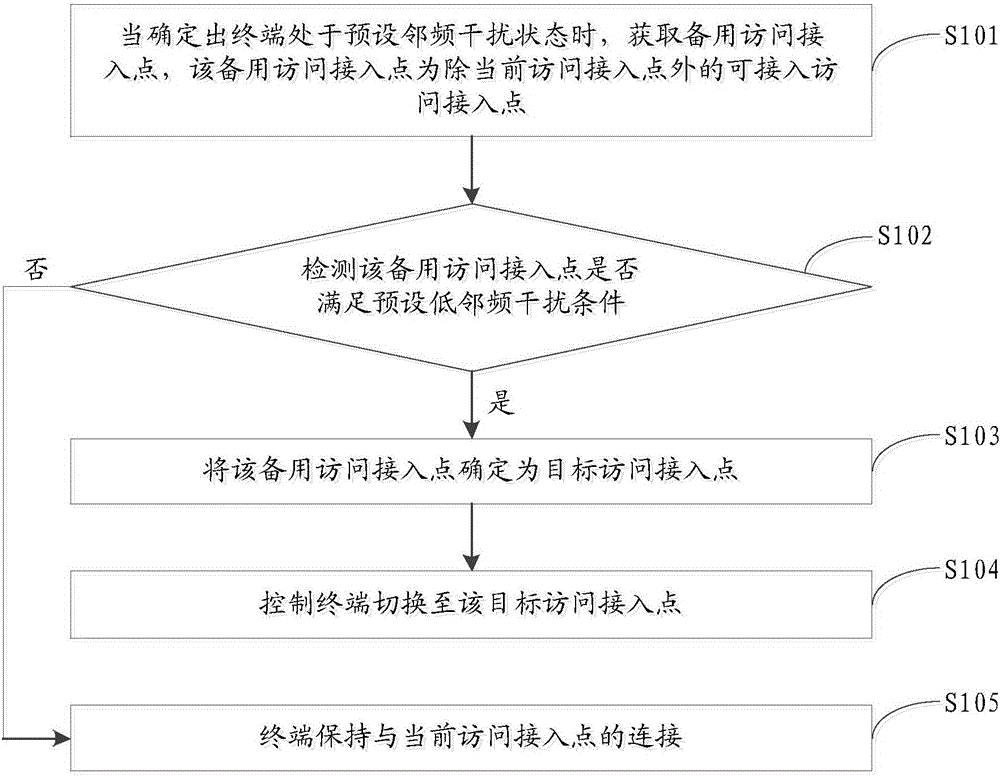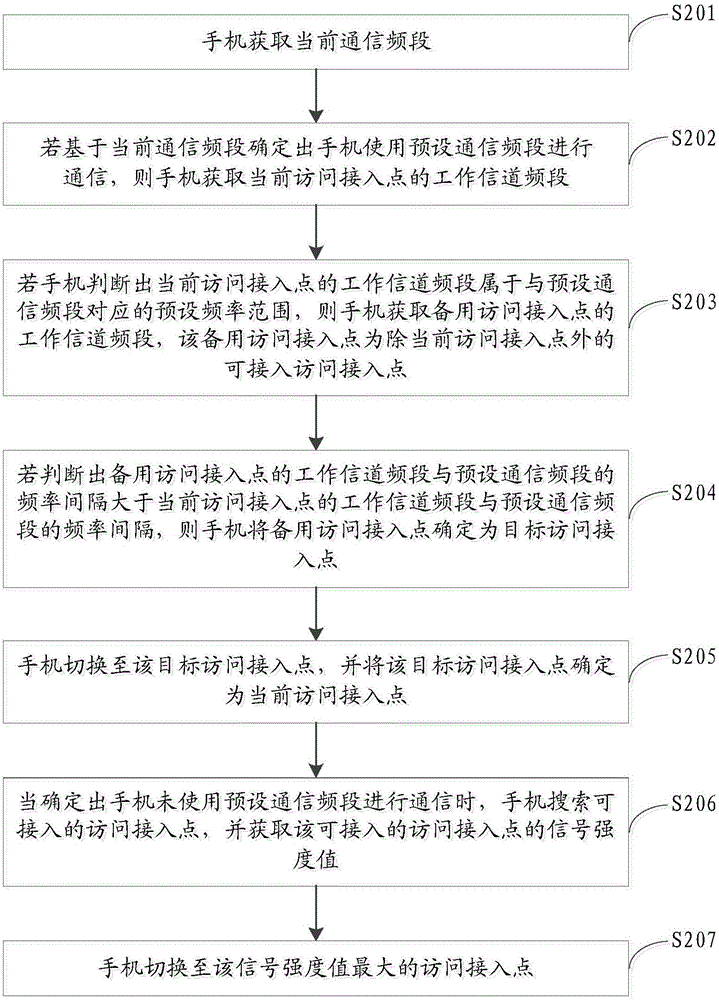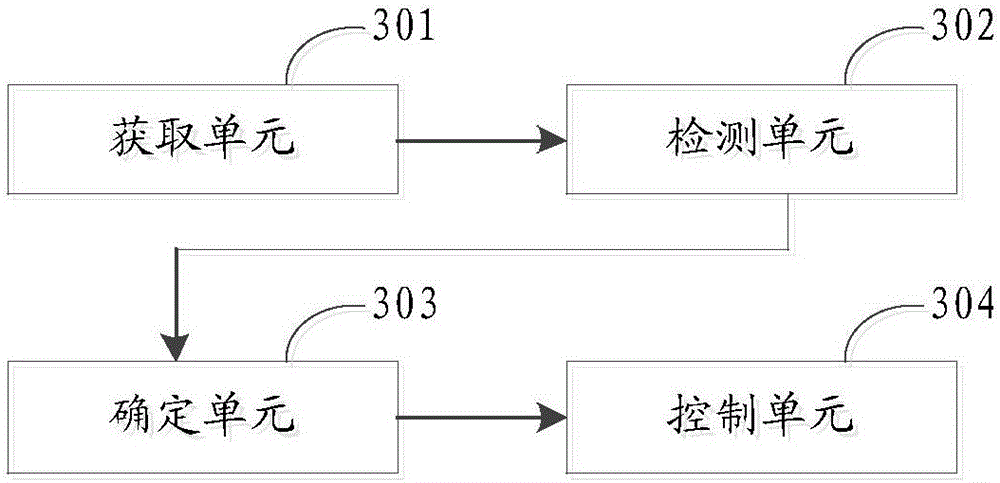Method and device for switching access point and mobile terminal
An access point and terminal technology, applied in the field of communication, can solve problems such as adjacent frequency interference, and achieve the effect of reducing adjacent frequency interference
- Summary
- Abstract
- Description
- Claims
- Application Information
AI Technical Summary
Problems solved by technology
Method used
Image
Examples
no. 1 example
[0028] A method for switching an access point, comprising: when it is determined that a terminal is in a preset adjacent-frequency interference state, obtaining a backup access point, where the backup access point is an accessible access point other than the current access point Accessing the access point; detecting whether the standby access point meets the preset low adjacent frequency interference condition; if it is detected that the standby access point meets the preset low adjacent frequency interference condition, then determining the standby access point as A target access point; the control terminal switches to the target access point.
[0029] see figure 1 , figure 1 It is a schematic flow diagram of the method for switching an access point provided in the first embodiment of the present invention, and the specific flow may include:
[0030] In step S101, when it is determined that the terminal is in a preset adjacent-channel interference state, a backup access poi...
no. 2 example
[0078] According to the method described in the first embodiment, the method for switching an access point will be further described in detail below taking a mobile phone as an example.
[0079] see figure 2 , figure 2 It is a schematic flow diagram of the method for switching an access point provided in the second embodiment of the present invention, and the specific flow may include:
[0080] In step S201, the mobile phone obtains the current communication frequency band.
[0081] In step S202, if it is determined based on the current communication frequency band that the mobile phone uses the preset communication frequency band for communication, the mobile phone obtains the working channel frequency band of the current access point.
[0082] For example, steps S201 and S202 may specifically include:
[0083] When a user uses a mobile phone to make a VoLTE (Voice over LTE) call, the mobile phone obtains the communication frequency band currently in use. Then, the mobi...
no. 3 example
[0126] In order to better implement the method for switching an access point provided by the embodiment of the present invention, the embodiment of the present invention further provides a device based on the above method for switching an access point. The meanings of the nouns are the same as those in the above method for switching access points, and for specific implementation details, please refer to the description in the method embodiments.
[0127] see Figure 3a , Figure 3a It is a schematic structural diagram of an apparatus for switching an access point provided in the third embodiment of the present invention, and the apparatus may include: an acquisition unit 301 , a detection unit 302 , a determination unit 303 , and a control unit 304 .
[0128] The acquiring unit 301 is configured to acquire a backup access point when it is determined that the terminal is in a preset adjacent-frequency interference state, where the backup access point is an accessible access po...
PUM
 Login to View More
Login to View More Abstract
Description
Claims
Application Information
 Login to View More
Login to View More - R&D
- Intellectual Property
- Life Sciences
- Materials
- Tech Scout
- Unparalleled Data Quality
- Higher Quality Content
- 60% Fewer Hallucinations
Browse by: Latest US Patents, China's latest patents, Technical Efficacy Thesaurus, Application Domain, Technology Topic, Popular Technical Reports.
© 2025 PatSnap. All rights reserved.Legal|Privacy policy|Modern Slavery Act Transparency Statement|Sitemap|About US| Contact US: help@patsnap.com



